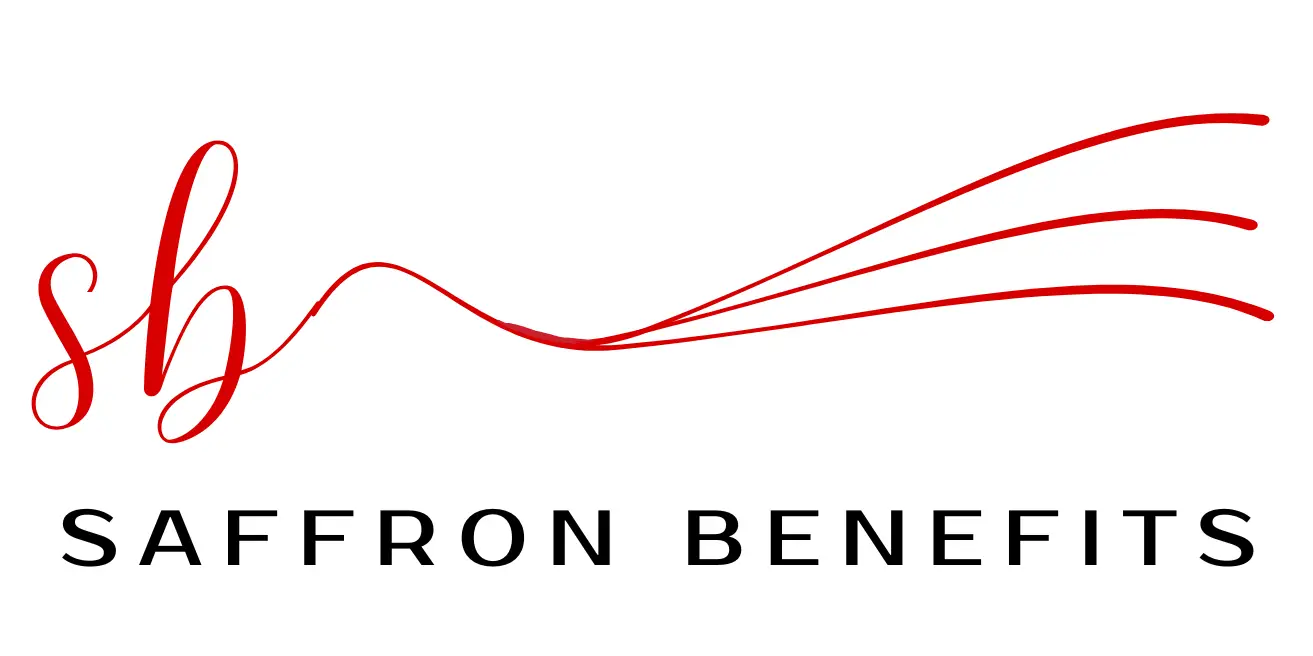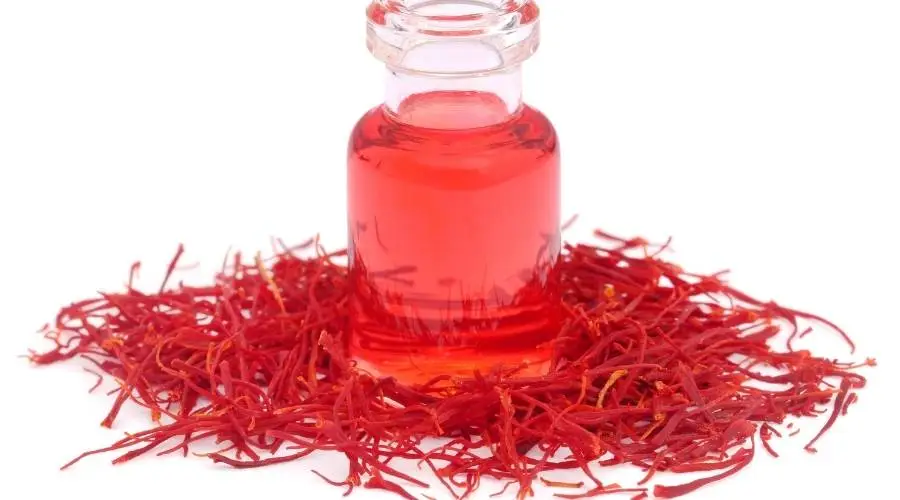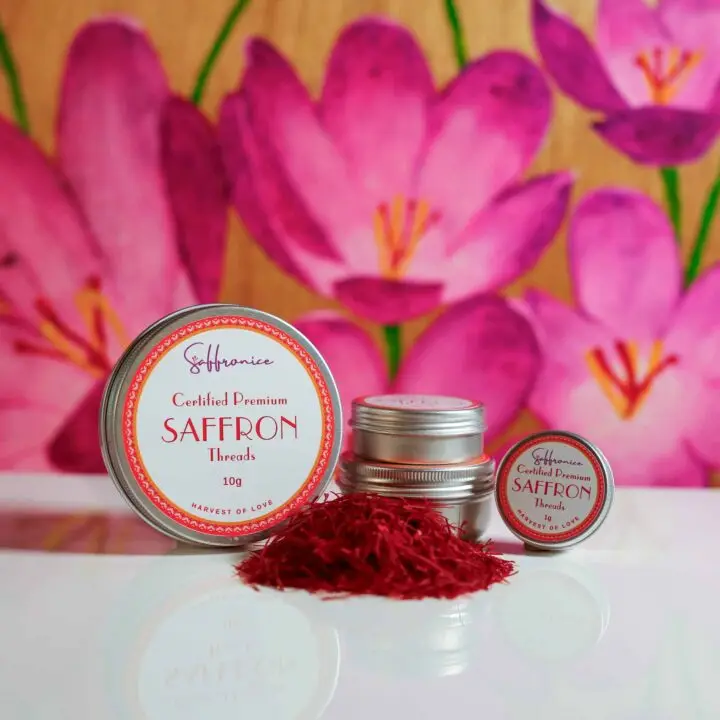📌 Quick Answer: Saffron threads excel in culinary applications with superior aroma, flavor complexity, and authentic cooking experience, while saffron extract provides standardized dosing for consistent therapeutic benefits, making it ideal for supplements targeting mood, depression, and antioxidant support.
Saffron, often called “red gold,” is one of the most valuable spices in the world. It comes from the delicate stigmas of the Crocus sativus flower and has a long history of being prized for its unique aroma, bright color, and distinct taste. Understanding what saffron is helps appreciate why it commands such reverence in both culinary and therapeutic applications.
There are two main types of saffron available in today’s market:
- Saffron Threads: The dried stigmas collected from the flower, known for their full sensory experience and culinary authenticity
- Saffron Extract: A concentrated form designed for convenience and consistent dosage, commonly used in supplements and therapeutic applications
Chef’s Professional Tip: After decades in professional kitchens, I’ve learned that saffron threads and extracts serve distinctly different purposes. Threads are irreplaceable for authentic flavor development, while extracts excel in providing measurable health benefits.
This comprehensive comparison explores both forms of saffron, examining their applications in cooking and healing while discussing the advantages and limitations of each. Our goal is to help you make informed decisions based on your specific culinary or therapeutic needs.
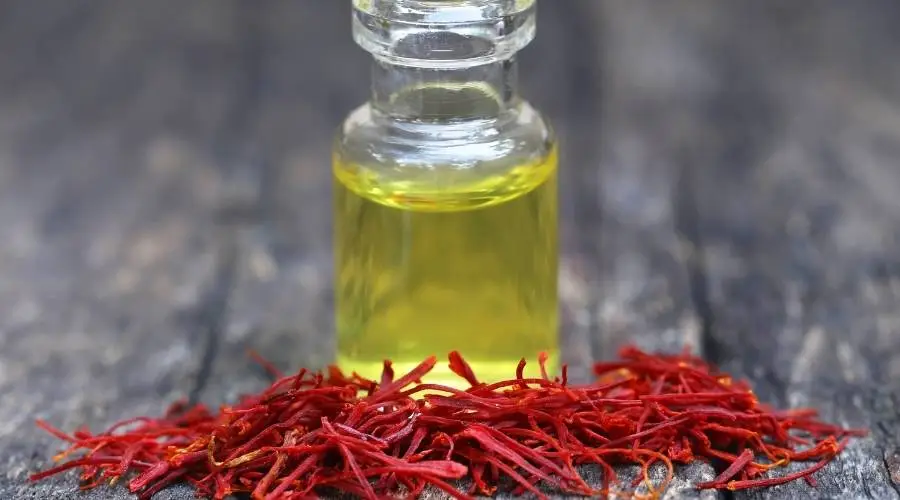
Understanding Saffron: Origins and Botanical Characteristics
Saffron comes from the Crocus sativus flower, a delicate plant that has been cultivated for over 3,000 years. Saffron cultivation requires specific climatic conditions and intensive hand labor, making it one of the world’s most expensive spices by weight.
Processing Methods and Quality Differences
Saffron Threads Processing: The dried stigmas undergo minimal processing, preserving their natural structure and full complement of bioactive compounds. Each thread maintains its trumpet-shaped tip and characteristic deep red coloration with orange undertones.
Saffron Extract Production: Concentrated extracts are produced through various methods, including alcohol extraction, water extraction, or CO2 supercritical extraction. These processes isolate and concentrate specific bioactive compounds while removing plant material and reducing volume.
Food Scientist’s Note: The extraction process can affect compound ratios and bioavailability. Water extracts preserve water-soluble compounds like crocin, while alcohol extracts capture both water and fat-soluble components more effectively.
Aroma, Flavor Profile, and Color Development
Saffron’s appeal lies in its distinct sensory characteristics, featuring subtle sweetness reminiscent of honey with complex earthy undertones. The bright golden-yellow color comes from carotenoid pigments like crocin, which also contribute significantly to its antioxidant properties.
Sensory Comparison:
- Threads: Full aromatic complexity with honey-hay fragrance, subtle bitterness, and metallic undertones
- Extract: Reduced aromatic profile with concentrated active compounds but diminished sensory experience.e
Culinary Applications: Threads vs Extract Performance
Superior Performance of Saffron Threads in Cooking
Saffron threads have been essential ingredients in Mediterranean cuisine for centuries. Learning how to cook with saffron reveals why threads remain the gold standard for authentic flavor development.
Mediterranean Cuisine Applications:
- Paella Valenciana: Threads infuse rice with characteristic golden color and complex flavor layers
- Risotto alla Milanese: Gradual thread dissolution creates creamy, aromatic richness
- Bouillabaisse: Threads enhance seafood broths with depth and aromatic complexity
Middle Eastern and Persian Culinary Traditions: Persian saffron cuisine demonstrates threads’ versatility in both savory and sweet applications. Traditional dishes like Ashe-E-Reshteh, Zereshk Polo, and Tahdig showcase saffron’s ability to transform ordinary ingredients into extraordinary culinary experiences.
Saffron rice dishes particularly benefit from threads’ slow color and flavor release, allowing gradual infusion that extracts cannot replicate. The physical presence of threads also provides visual appeal and texture variation.
Professional Preparation Techniques:
- Soak 10-12 threads in warm (not boiling) water for 10-15 minutes before use
- Grind threads with coarse salt or sugar for even distribution
- Add soaking liquid and threads to dishes for maximum flavor extraction
- Pair with complementary spices like cardamom, cinnamon, or rose petals
Culinary Limitations of Saffron Extract
Saffron extract faces significant limitations in cooking applications, primarily due to its inability to provide the complete sensory experience that defines authentic saffron usage.
Flavor Profile Deficiencies:
- Limited aromatic complexity: Extraction processes reduce volatile compounds responsible for saffron’s distinctive fragrance
- Altered taste characteristics: Concentrated extracts may taste more bitter or medicinal than threads
- Color development issues: Synthetic-looking color release lacks the gradual, natural golden transformation of threads
Practical Cooking Challenges: Extract dosing proves difficult in culinary applications. Unlike threads, where individual pieces can be counted and soaked, extracts require precise measurement that often doesn’t align with traditional recipe requirements.
Authenticity Considerations: Professional chefs and serious home cooks consistently prefer threads for authentic flavor development. The nuanced layers of taste and scent that define great saffron dishes simply cannot be replicated through extracted forms.
Health Benefits and Therapeutic Applications
Scientific Research on Bioactive Compounds
Both saffron forms contain powerful bioactive compounds, but their concentrations and bioavailability differ significantly based on processing methods.
Key Active Compounds:
- Crocin: Carotenoid responsible for golden color with potent antioxidant properties protecting cells from free radical damage
- Safranal: A Volatile compound creating a characteristic aroma with mood-enhancing and neuroprotective effects
- Picrocrocin: A Glucoside contributing to bitterness with anti-inflammatory properties
- Kaempferol: Flavonoid supporting cardiovascular health and cellular protection
Therapeutic Applications and Clinical Evidence
Mood Enhancement and Depression Support: Clinical studies demonstrate that saffron for depression shows remarkable efficacy. A 2014 randomized controlled trial compared 30mg daily saffron extract to 20mg Prozac in 40 adults with major depression, showing equal effectiveness after 6 weeks.
Research Findings:
- Hamilton Depression Rating Scale scores improved equally in both groups
- Saffron participants experienced fewer side effects than pharmaceutical users
- Onset of benefits typically occurs within 2-4 weeks of consistent supplementation
Antioxidant and Anti-inflammatory Effects: Saffron’s antioxidant properties provide comprehensive health protection through multiple mechanisms:
- Cellular protection: Crocin and crocetin neutralize free radicals and reduce oxidative stress
- Inflammation reduction: Picrocrocin inhibits inflammatory pathways linked to chronic diseases
- Cardiovascular support: Combined compounds improve lipid profiles and reduce arterial inflammation
Additional Therapeutic Applications:
- PMS symptom relief: 30mg daily extract reduces mood swings, cramps, and fatigue by 50%
- Cognitive support: Safranal enhances memory formation and may protect against age-related decline
- Sexual health: Traditional aphrodisiac properties supported by modern research showing improved libido
Traditional Medicine vs Modern Standardization
Historical Usage Patterns: Saffron threads have an extensive history in traditional medicine systems, particularly Greek and Persian healing practices. Ancient practitioners used whole threads for mood enhancement, memory support, and libido improvement, relying on empirical observation rather than standardized dosing.
Modern Extract Advantages: Contemporary saffron extracts offer standardized dosage control, ensuring consistent therapeutic effects:
- Precise compound concentrations: Each dose contains measured amounts of active ingredients
- Quality assurance: Standardized extracts undergo rigorous testing for potency and purity
- Convenient administration: Capsule or liquid forms eliminate preparation requirements
- Clinical research support: Most therapeutic studies use standardized extracts for reliable results
Comparing Therapeutic Effectiveness
Threads for Traditional Applications:
- Provide a full spectrum of compounds in natural ratios
- Suitable for gentle, long-term wellness support
- Ideal for combining therapeutic and culinary benefits
- Variable potency depending on quality and age
Extracts for Clinical Applications:
- Deliver consistent, measurable therapeutic doses
- Better suited for addressing specific health conditions
- Easier integration into supplement regimens
- Supported by clinical research protocols
Practical Considerations: Storage, Safety, and Usage
Storage Requirements and Shelf Life Management
Proper saffron storage methods significantly impact both culinary and therapeutic effectiveness.
Optimal Thread Storage:
- Airtight glass containers protecting from light and moisture
- Cool, dark locations maintaining temperature below 68°F (20°C)
- Separation from strong-scented spices prevents aroma contamination
- Shelf life of 2-3 years with gradual potency reduction
Extract Storage Requirements:
- Original packaging with desiccants maintains stability
- Refrigeration for liquid extracts extends shelf life
- Protection from temperature fluctuations, preserving potency
- Longer shelf life than threads due to concentration and preservatives
Safety Considerations and Dosage Guidelines
Understanding safe saffron dosage daily requirements prevents adverse effects while maximizing benefits.
Safe Consumption Limits:
- Culinary use: 10-15 threads per serving (approximately 0.1-0.3g)
- Therapeutic supplementation: 15-30mg extract daily for adults
- Maximum safe intake: 1.5g daily (equivalent to 200-300 threads)
- Pregnancy considerations: Maximum 5mg daily to prevent uterine contractions
Toxicity Warning Signs: Potential side effects of saffron include nausea, vomiting, dizziness, an,d in severe cases, bleeding disorders. These symptoms typically occur with consumption exceeding 5g daily.
Special Population Guidelines:
- Pregnant women should avoid therapeutic doses
- Individuals with bleeding disorders require medical supervision
- Drug interactions are possible with anticoagulants and antidepressants
- Children’s doses should be proportionally reduced based on body weight
Quality Assessment and Product Selection
Evaluating Thread Quality
High-quality saffron threads display specific characteristics indicating authenticity and potency:
Visual Indicators:
- Deep red coloration with slight orange tips
- Trumpet-shaped stigma ends
- Minimal yellow or white stem material
- Natural size variation indicating hand-harvesting
Sensory Evaluation:
- Complex honey-hay aroma with metallic undertones
- Slight bitterness when tasted directly
- Gradual golden color release in warm water
- Thread integrity is maintained after soaking
Extract Quality Standards
Reputable saffron extracts should provide comprehensive quality documentation:
Certification Requirements:
- Third-party laboratory analysis confirming compound concentrations
- Heavy metal testing ensures safety standards
- Microbiological testing prevents contamination
- Standardization to specific crocin, safranal, and picrocrocin levels
Label Information:
- Clear extraction method disclosure
- Standardization percentages for key compounds
- Recommended dosage based on clinical research
- Expiration dates and storage instructions
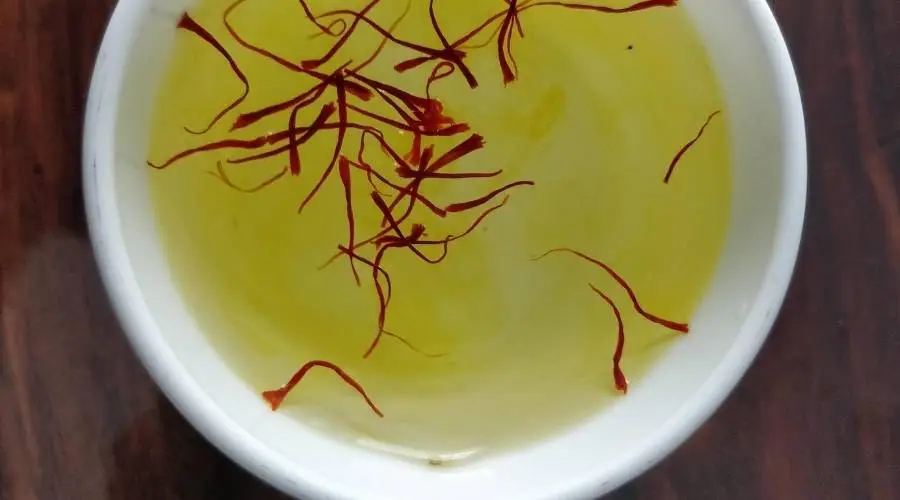
Cost-Benefit Analysis: Threads vs Extract
Economic Considerations
Thread Pricing Factors:
- Quality grade significantly affects price (Super Negin vs lower grades)
- Origin region influences cost (Iranian, Kashmiri, Spanish varieties)
- Seasonal availability creates price fluctuations
- Bulk purchasing reduces per-gram costs
Extract Pricing Variables:
- Standardization level affects manufacturing costs
- Capsule vs liquid forms impact pricing
- Brand reputation commands premium pricing
- Concentration ratios determine value propositions
Value Assessment Framework
Culinary Value Comparison: For cooking applications, threads provide superior value through:
- Irreplaceable sensory contributions to authentic dishes
- Multiple uses from a single purchase (culinary and therapeutic)
- Traditional preparation methods maximize flavor extraction
- Cultural authenticity in traditional recipes
Therapeutic Value Analysis: Extracts offer better therapeutic value through:
- Consistent dosing eliminates guesswork
- Clinical research supporting specific health benefits
- Convenient daily supplementation regimens
- Standardized potency ensuring predictable results
Professional Recommendations and Best Practices
For Culinary Applications
When to Choose Threads:
- Authentic ethnic cuisine requires traditional flavors
- Special occasion cooking where presentation matters
- Recipe development requires gradual flavor building
- Educational cooking experiences teaching traditional techniques
Preparation Excellence: Understanding different saffron powder vs thread applications helps optimize culinary results. Threads excel in slow-cooking methods where gradual extraction enhances complexity.
For Therapeutic Applications
When to Choose Extracts:
- Specific health conditions requiring measured dosing
- Clinical protocols following research guidelines
- Daily supplementation for mood or cognitive support
- Integration with other standardized supplements
Professional Guidance: Therapeutic saffron use benefits from healthcare professional consultation, particularly for individuals with medical conditions or taking prescription medications.
Making the Optimal Choice
Decision Framework
Culinary-Focused Selection: Choose saffron threads when:
- Authentic flavor development is paramount
- Traditional cooking methods are preferred
- Visual appeal and texture contribute to dish presentation
- Cultural authenticity matters in recipe execution
Health-Focused Selection: Choose saffron extract when:
- Consistent therapeutic dosing is required
- Specific health conditions need targeted treatment
- Convenience in daily supplementation is a priority
- Clinical research protocols guide usage
Hybrid Approach Benefits: Many serious saffron enthusiasts maintain both forms:
- Threads for culinary adventures and special occasions
- Extracts for daily health maintenance and therapeutic goals
- Understanding comprehensive saffron health benefits guides optimal usage
Conclusion: Balancing Tradition and Innovation
The choice between saffron extract and threads ultimately depends on intended applications and personal priorities. Culinary enthusiasts seeking authentic flavor development, aromatic complexity, and traditional cooking experiences will find threads irreplaceable. Their sensory contributions to saffron desserts and savory dishes cannot be replicated through extracted forms.
Conversely, individuals prioritizing therapeutic benefits, consistent dosing, and convenient supplementation will find extracts more suitable for their needs. The standardized nature of quality extracts provides measurable health benefits supported by clinical research.
Key Decision Factors:
- Culinary authenticity: Threads provide a superior sensory experience
- Therapeutic consistency: Extracts offer standardized dosing
- Cost considerations: Usage patterns affect value propositions
- Convenience preferences: Extracts require less preparation
- Quality assurance: Both forms need careful sourcing
Final Recommendations: For optimal saffron experience, consider maintaining both forms—threads for culinary creativity and cultural authenticity, extracts for health optimization and therapeutic applications. This approach maximizes the benefits of this remarkable spice while honoring both traditional wisdom and modern scientific understanding.
Understanding the distinct advantages of each form empowers informed decisions that enhance both culinary adventures and wellness journeys, ensuring you derive maximum value from your saffron investment.
FAQs (Frequently Asked Questions)
What are the main differences between saffron threads and extract in terms of culinary applications?
Saffron threads provide superior culinary performance with complex aroma, authentic flavor development, and gradual color release that defines traditional dishes. Extract lacks the full sensory experience, reduced aromatic complexity, and altered taste characteristics that make threads essential for authentic cooking applications.
Which form of saffron is more effective for health benefits and therapeutic use?
Saffron extract typically provides more consistent therapeutic benefits due to standardized dosing of active compounds like crocin, safranal, and picrocrocin. Clinical studies showing mood enhancement, antioxidant effects, and PMS relief primarily used standardized extracts, ensuring reliable therapeutic results.
How should I store saffron threads versus extract to maintain their quality?
Store saffron threads in airtight glass containers in cool, dark locations below 68°F (20°C) with a 2-3 year shelf life. Saffron extract should remain in its original packaging, with liquid forms requiring refrigeration and a longer shelf life due to concentration and preservatives.
Are there safety differences between using saffron threads and extract?
Both forms carry similar safety profiles, with toxicity risks appearing above 5g daily consumption. Therapeutic extracts require more precise dosing awareness (15-30mg daily) while culinary thread use (10-15 threads per serving) typically stays well within safe limits. Pregnant women should limit both forms to a maximum of 5mg daily.
Can I substitute saffron extract for threads in traditional recipes?
Substitution is not recommended for authentic traditional recipes requiring threads’ sensory contributions. Extract cannot replicate the aromatic complexity, flavor development, and visual appeal that threads provide. For therapeutic benefits in cooking, small amounts of extract can supplement threads but not replace them.
Which form of saffron offers better value for money?
Value depends on intended use. Threads provide better culinary value for authentic cooking applications and can serve dual culinary-therapeutic purposes. Extracts offer superior therapeutic value through consistent dosing and clinical research support. Serious users often maintain both forms for optimal versatility.
